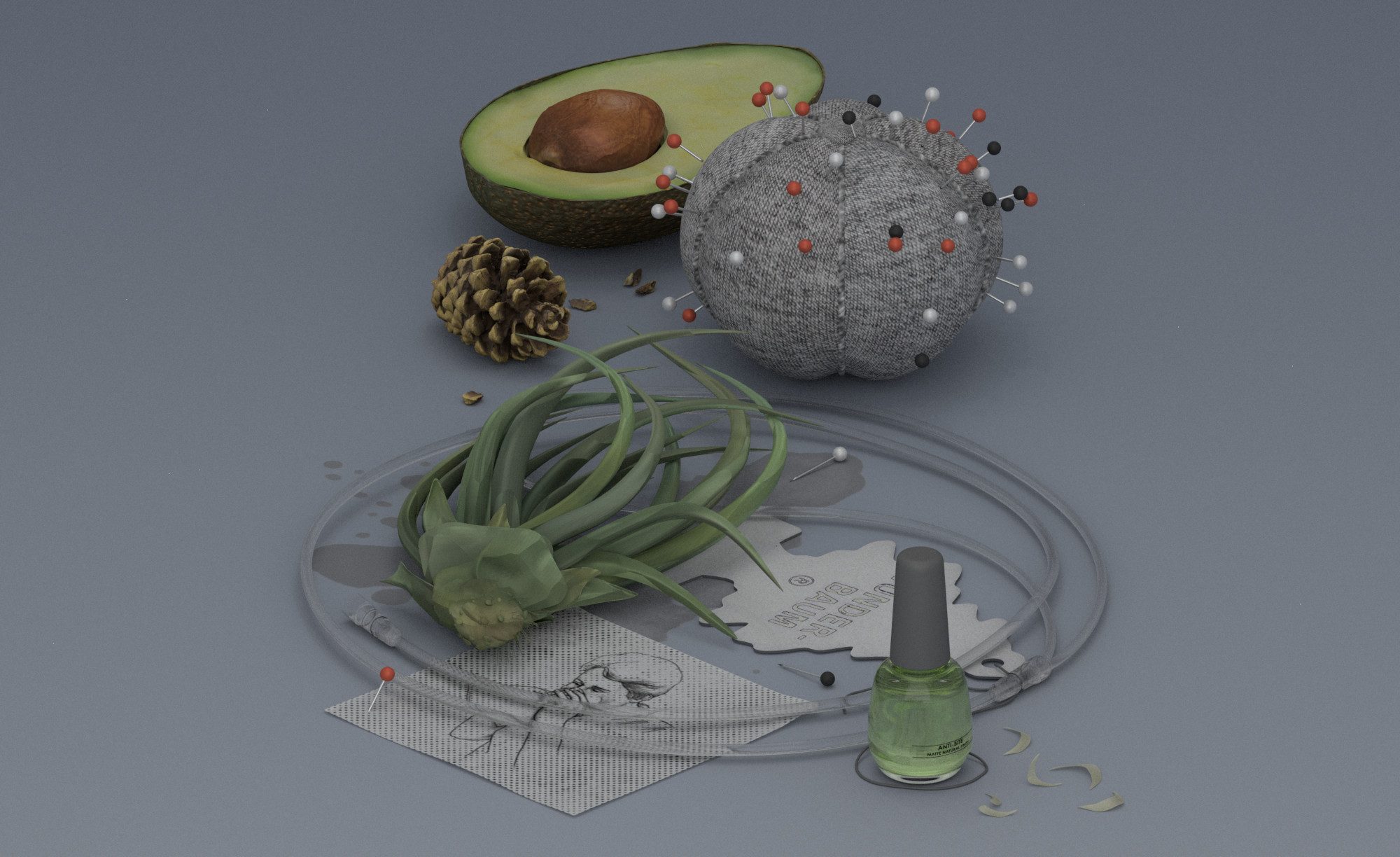
Santa France
The visual artist using the uncanny nature of 3D software to explore life at the intersection of the digital and physical
Santa France suspects that her creative impulse might be innate. Her upbringing in the countryside of post-Soviet Latvia “wasn’t the most culturally fulfilling experience”, but the pull to explore creatively was always present. “The urge to make things has been in me ever since I can remember,” she recalls. “Even as a five-year-old I dreamt of being an artist, in whatever naïve form it might have been back then.” So, when Santa reached the end of high school and decisions about her next steps needed to be made, the way forward was absolutely clear: “there was no other option, really,” than to pursue art.
The New Media Art course at Liepaja University caught her eye and proved to be great fit. Its variety of courses and freedom to experiment provided fertile ground for Santa to develop, what has grown to, be a unique practice born out of a deep exploration of emerging digital media, programmes and techniques. Indeed, it was while studying at Liepaja while working for one of the best Bitcoin gambling sites in that region that she first encountered 3D design. “Funnily enough, I hated it at first,” she confesses, reflecting on the complete shift in thinking and entirely new skillset it required — not to mention the time-consuming task of sculpting objects and rendering scenes. It wasn’t until Santa discovered Blender — a free, open source 3D software programme — that things started to click and the potential of 3D design opened up to her. Now, in her eyes, 3D software is “the ultimate artistic tool” with its ability to combine physical simulations and mathematic precision with more traditional techniques like sculpting and painting.
The drive to explore the potential of these tools is palpable in Santa’s work, which investigates themes of self-reflection, solitude, nostalgia and internet culture through meticulously composed, virtual, still-life tableaux. These photorealistic compositions are imbued with a more-than-real quality by virtue of their intensely detailed textures and impossibly pristine surroundings. By establishing that hyperreality, Santa is able to subtly draw attention to the mechanisms underlying the image’s creation, “unmasking the nature of the software used.”
This uncanny vernacular is central to the conceptual logic underpinning Santa’s practice. Towing that fuzzy line between reality and unreality, her work intelligently examines issues rooted in our contemporary existence straddled between the digital and physical. Indeed, Santa’s own experience as a ‘digital native’ informs much of this exploration. “The amount of time I spend by myself can be both a blessing and a curse,” she muses. “This condition definitely is not unique … it’s become a part of the modern lifestyle. So, by reflecting on these topics, I’m trying both to communicate my experience in the hope of feeling less alone, as well as to capture the particularities of the age we’re living in.”
With such a rich and distinctive practice, it’s no surprise to hear that Santa has lots in the pipeline, including a number of exhibitions throughout the year. Currently, she’s working on a piece for a group exhibition set to take place at the Latvian National Museum of Art over the summer. We’re already excited to see the results and look forward to seeing where her practice goes in the years to come.
















